Australia is a continent rich with species, and one of the most diverse groups are the invertebrates (sometimes called minibeasts). Invertebrates can be found across every part of Australia, from snowy alpine peaks to steamy tropical rainforests, and baking hot deserts.
Although Australia is home to a multitude of species, many of them have declined due to human activities and are now classified as threatened species.
Most Australians are familiar with a few famous threatened mammals like the Tasmanian Devil (Sarcophilus harrisii), Numbat (Myrmecobius fasciatus), and Leadbeater’s or Fairy Possum (Gymnobelideus leadbeateri), but few can name even a single threatened Aussie invertebrate. If ordinary Aussies can recognise just a handful of our threatened invertebrates, then they can talk about them to friends and neighbours and raise awareness of the major declines many invertebrates are suffering both globally and within Australia.
Now, let me introduce you to four incredible Aussie minibeasts threatened with extinction, so that you can spread awareness of our often-overlooked threatened invertebrates!
Golden Sun-moth
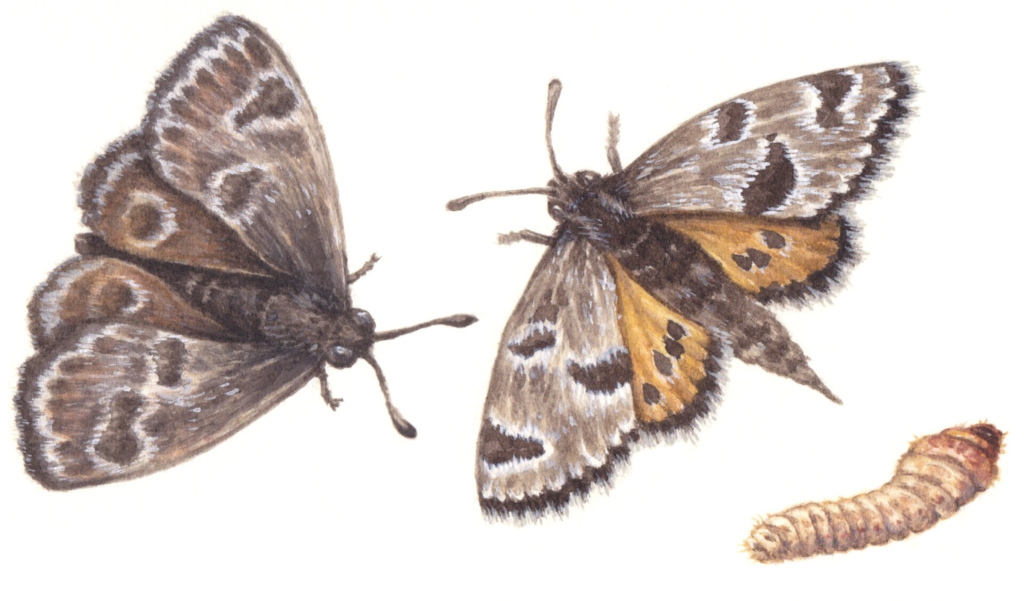
Species name: Synemon plana
Conservation status: Vulnerable
Location: South-eastern Australia
Habitat: Grassland and grassy woodlands
Diet: caterpillars feed on Wallaby Grass (Rytidosperma spp.) but the adults never eat at all!
The Golden Sun-moth once occurred over the vast grasslands of South-eastern Australia. However, following the second wave of human colonisation in Australia (circa 1788), their grasslands were increasingly converted into paddocks to graze livestock, including sheep and cattle. Many exotic grasses were introduced to feed the livestock, but which the caterpillars of the golden sun moth could not eat.
In recent years, much of the Golden Sun-moth’s remaining habitat has been decimated by unscrupulous property developers who pave over their grassland habitat to build housing estates. Today, the last populations of this species are small and scattered. Much of their habitat is still threatened by exotic grasses, land clearing for housing developments, and livestock grazing.
Sadly, the future does not look bright for this beautiful day-flying moth but you can help by visiting, celebrating and advocating for the preservation of South-eastern Australia’s precious remaining grasslands
Dracula’s Short-tailed Whipscorpion
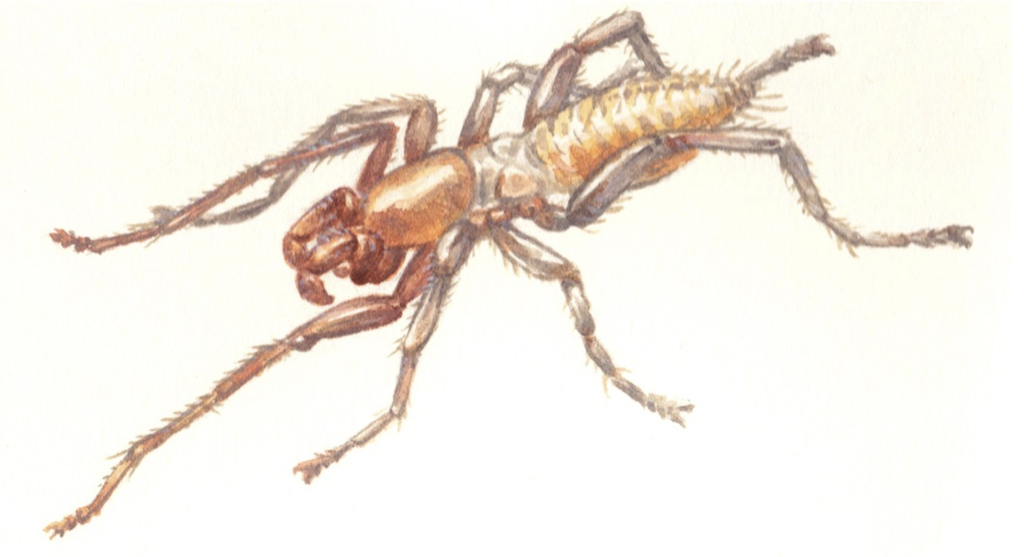
Species: Draculoides bramstokeri
Conservation status: Vulnerable
Location: Barrow Island (Western Australia)
Habitat: Caves
Diet: Small invertebrates
This strange arachnid is a distant relative of spiders, scorpions, and mites. It spends its whole life in the darkness, and has only been recorded from 6 caves, all on Barrow Island. Just like a vampire, this peculiar predator feeds by sucking out the juices of its prey. Because of its extremely limited distribution, Dracula’s Short-tailed Whipscorpion is particularly vulnerable to disturbances and pollution in their caves.
Unfortunately, this species is very poorly studied and much remains to be learned about their biology and conservation needs.
Otway Flesh-eating Snail
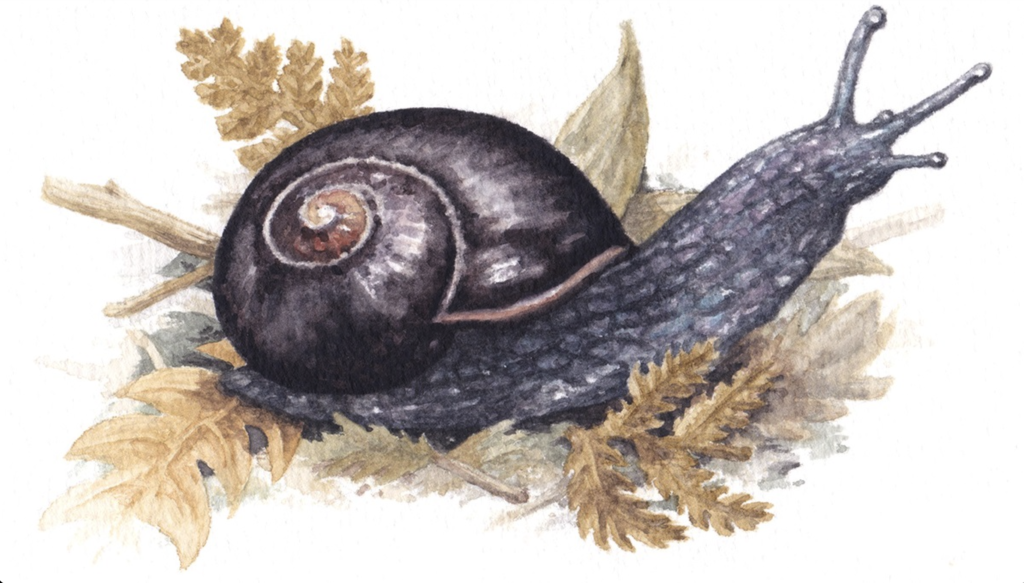
Species: (Victaphanta compacta)
Conservation status: Endangered
Location: Otway Ranges, Victoria
Habitat: wet sclerophyll forests and cool temperate rainforest
Diet: other snails, slugs, and earthworms
The Otway Flesh-eating Snail is a denizen of the cool, damp understory of forests around the Otway Ranges. This slow-moving predator stalks the moss beds and leaflitter for unsuspecting invertebrates to feed on.
Unfortunately, due to its need for cool, wet habitat this bizarre invertebrate is at particular risk from bushfires and droughts. As the climate changes, increasingly severe droughts and fires are expected to shrink the already limited range of this incredible species. Sadly, regular monitoring is not undertaken on this rare species, so at present, conservationists have no way of knowing if this species is declining any further.
Lord Howe Island Stick Insect
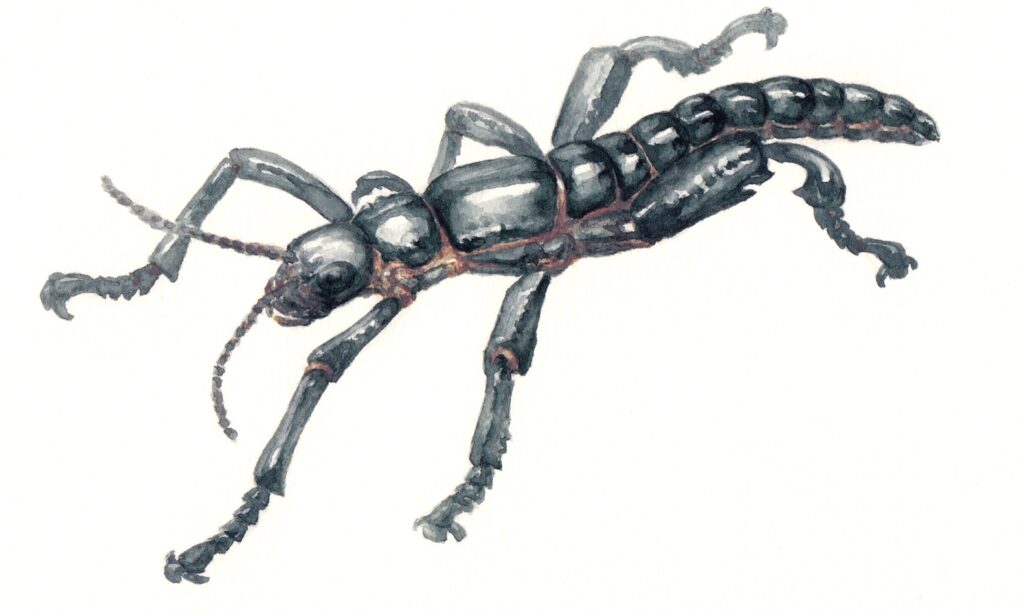
Species: (Dryococelus australis)
Conservation status: Critically endangered
Location: Ball’s Pyramid
Habitat: Rocky escarpments with Lord Howe Island Tea Tree (Melaleuca howeana)
Diet: Lord Howe Island Tea Tree (Melaleuca howeana)
Back in 1918, a rat-infested ship sank close to the coast of Lord Howe Island. Soon the rats swam to shore and began eating the Lord Howe Island Stick Insects which were once widespread across the small subtropical island. Within a few years the Lord Howe Island Stick Insect was feared to be extinct. However, conservationists discovered a small population on a neighbouring island called Ball’s Pyramid and one pair was used to establish a captive breeding program at Melbourne Zoo. Since then, rats have been eradicated from Lord Howe Island and thousands of Lord Howe Island Stick Insects have been bred in captivity. Plans have already been drawn up to reintroduce this rare insect back to its former island home and someday soon, the subtropical forests of Lord Howe Island will again support this rare insect!
Now that you know some of our threatened native invertebrates, why not go out and tell your family and friends about them? Cute and cuddly wildlife like koalas and wallabies have plenty of fans, so why not become a voice for our often-overlooked – though just as interesting – threatened invertebrates? After all, they need all the help they can get!
Banner image and illustrations by Cameron Brideoake. Cameron Brideoake is a natural history illustrator based in Melbourne. Inspired by the great naturalists of old, he works in traditional media, painting his subjects in watercolour and gouache. A fanatic for everything Earth science related, Cameron’s special interests include paleobotany, entomology and conservation. To follow his latest projects find him on Instagram or on Facebook.

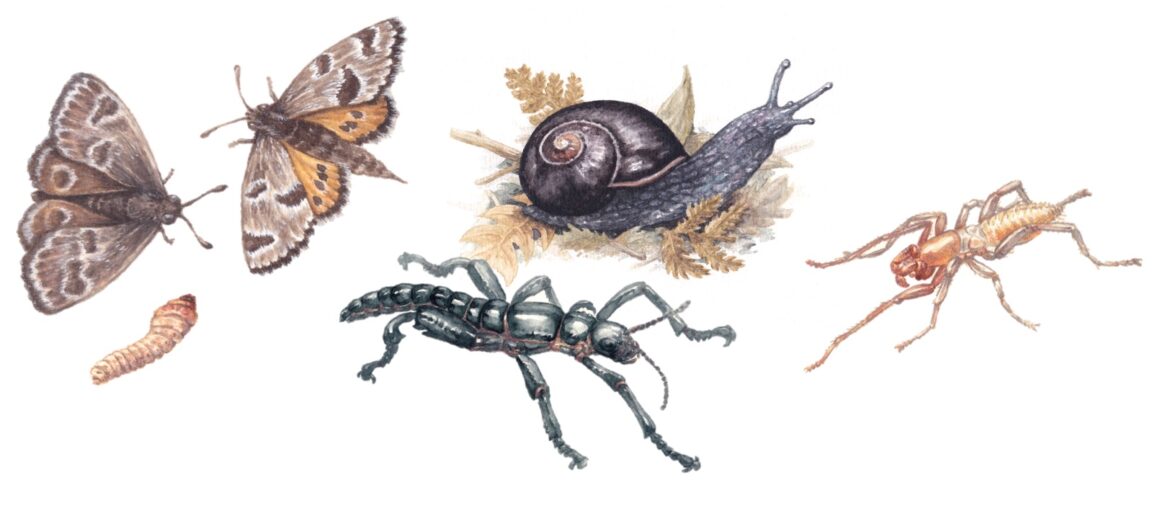
Leave a Reply